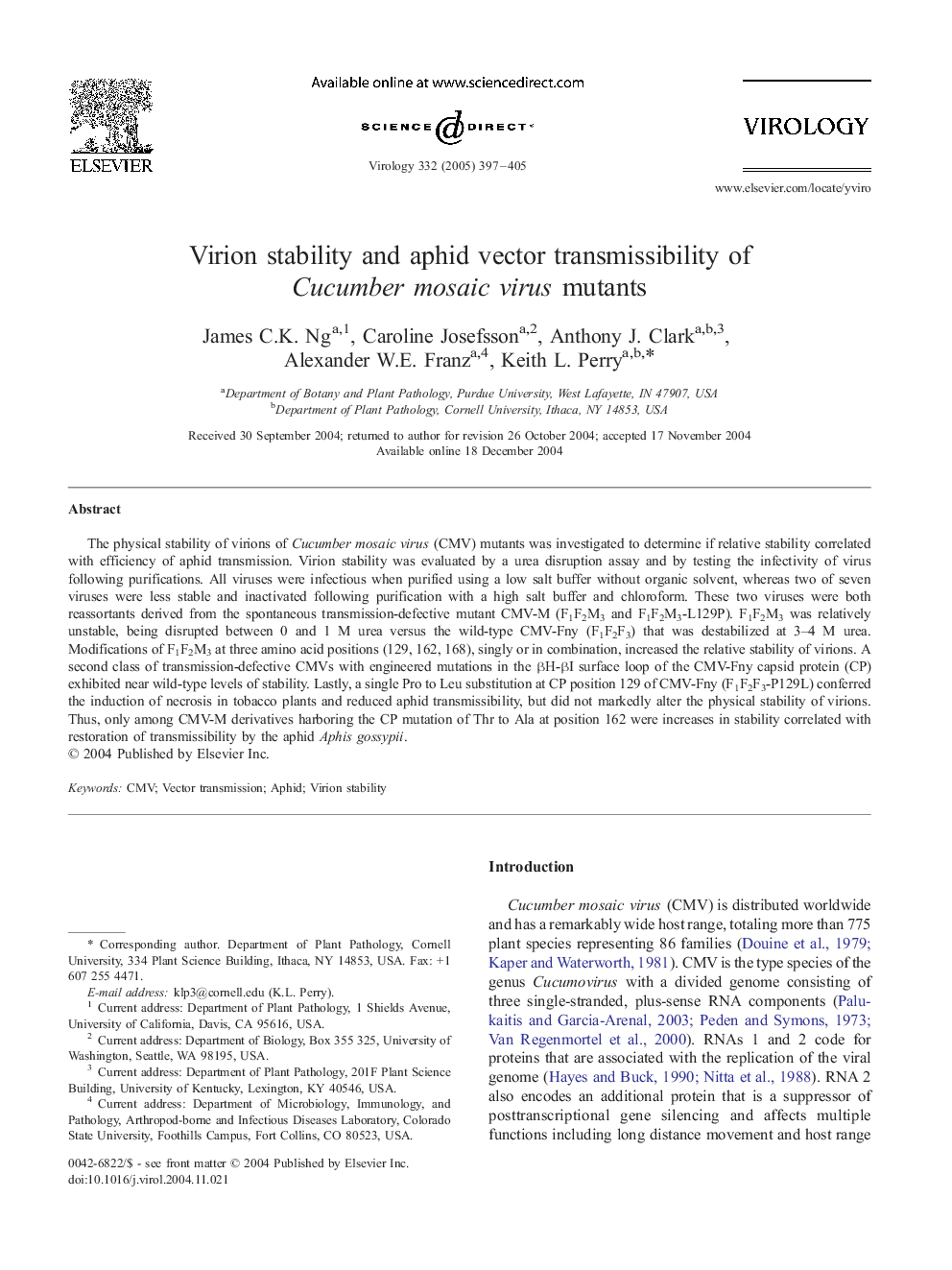| Article ID | Journal | Published Year | Pages | File Type |
|---|---|---|---|---|
| 9287141 | Virology | 2005 | 9 Pages |
Abstract
The physical stability of virions of Cucumber mosaic virus (CMV) mutants was investigated to determine if relative stability correlated with efficiency of aphid transmission. Virion stability was evaluated by a urea disruption assay and by testing the infectivity of virus following purifications. All viruses were infectious when purified using a low salt buffer without organic solvent, whereas two of seven viruses were less stable and inactivated following purification with a high salt buffer and chloroform. These two viruses were both reassortants derived from the spontaneous transmission-defective mutant CMV-M (F1F2M3 and F1F2M3-L129P). F1F2M3 was relatively unstable, being disrupted between 0 and 1 M urea versus the wild-type CMV-Fny (F1F2F3) that was destabilized at 3-4 M urea. Modifications of F1F2M3 at three amino acid positions (129, 162, 168), singly or in combination, increased the relative stability of virions. A second class of transmission-defective CMVs with engineered mutations in the βH-βI surface loop of the CMV-Fny capsid protein (CP) exhibited near wild-type levels of stability. Lastly, a single Pro to Leu substitution at CP position 129 of CMV-Fny (F1F2F3-P129L) conferred the induction of necrosis in tobacco plants and reduced aphid transmissibility, but did not markedly alter the physical stability of virions. Thus, only among CMV-M derivatives harboring the CP mutation of Thr to Ala at position 162 were increases in stability correlated with restoration of transmissibility by the aphid Aphis gossypii.
Keywords
Related Topics
Life Sciences
Immunology and Microbiology
Virology
Authors
James C.K. Ng, Caroline Josefsson, Anthony J. Clark, Alexander W.E. Franz, Keith L. Perry,
